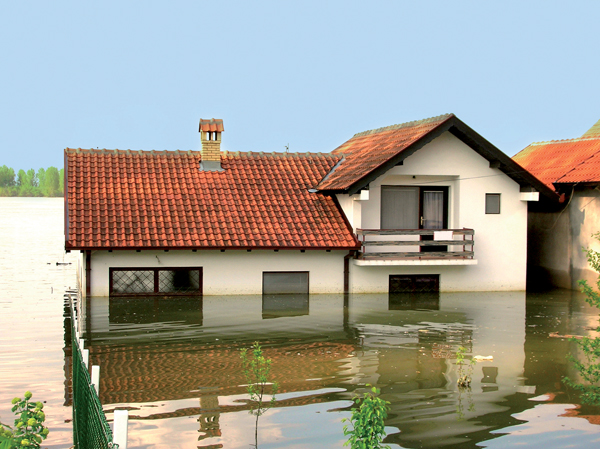PREVENTION IS BETTER THAN CURE
Undoubtedly, the next step after you decide on building your house is to assess the probable flood depth that the house is subjected to. Ideally, no one would build in a flood zone; however, with such competition for land, compromises have to be made. Nevertheless, we have to remember that not only buildings located in a flood plain are at the risk of flooding. Even in normal conditions, a few rainy days may result in flooding your basement.
TIPS ON HOW TO BUILD A FLOOD-RESILIENT HOUSE
– FOUNDATIONS: Solid ground-bearing concrete slabs are much better than suspended floors, in which the subfloor space may need cleaning out after a flood.
– TIMBER: Avoid timber framed walls as they might not withstand long immersion in water.
– GYPSUM PLASTERBOARD: Instead, use more resilient renders, such as cement or lime.
– INSULATION: Such materials as polystyrene or polyurethane are more water-resistant than mineral or natural wool.
– BRICKS: Use engineering bricks up to likely flood levels. They are virtually waterproof.
– EXTERNAL DOORS: Choose doors made up from PCV rather than timber.
– SOCKETS AND APPLIANCES: Place them as high as possible.
WHAT TO DO WHEN A FLOOD STRIKES
Even if you have already built a house that, unfortunately, is not flood-resilient, there are still a number of things you can do to minimize the damage when a flood strikes.
1. KEEP INFORMED
Find out if your home falls into the risk category.
2. BE PREPARED
There are some methods you can use to prevent water from entering your home
– Clear your drains
– Keep a supply of sandbags and plywood in your home
– Place non-returnable or backflow valves on all drains in and around the house. They would prevent water from rising through the drain and spilling into the building. They also stop water from coming up underneath your home
3. PROTECT YOUR BELONGINGS
– Any valuable items or those with special sentimental value for you should be stored upstairs
– Back up personal data from your laptops and PCs at regular intervals
– Keep valuables on high level shelves. For example, you may mount your TV to the wall
4. COVER YOURSELF AGAINST FLOOD DAMAGE

© Julija Sapic – Fotolia.com
GLOSSARY:
tip –wskazówka
to protect from –chronić, zabezpieczyć przed
flooding –powodzie, zalewanie
to suffer from –tu: doznać
flood-resilient –zabezpieczony przed powodzią
in case –w razie (czegoś), na wypadek
prevention is better than cure –lepiej zapobiegać, niż leczyć
to assess –ocenić
flood depth –głębokość wód gruntowych
flood plain –teren zalewowy
at the risk of –narażony na
basement –piwnica
foundations –fundamenty
concrete slab –płyta betonowa
suspended floor –tu: fundament podwieszany
subfloor –ślepa podłoga
timber –drewno (konstrukcyjne)
to withstand –wytrzymać
immersion –zanurzenie
(gypsum) plasterboard –płyta gipsowa
render –zaprawa
lime –wapno
wool –wełna
socket –gniazdko
appliance –urządzenie
prevent –uniemożliwić
to clear –przeczyścić, przepchnąć
drain –przewód/rura kanalizacyjna
supply –zapas
sandbag –worek z piaskiem
plywood –sklejka
valve –zawór
belongings –dobytek
valuable –cenny
upstairs –na górze, na piętrze
at regular intervals –regularnie
to cover oneself against –ubezpieczyć się na wypadek
damage –szkoda, uszkodzenie
Magdalena Marcinkowska




